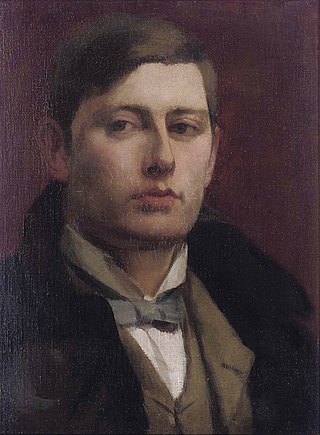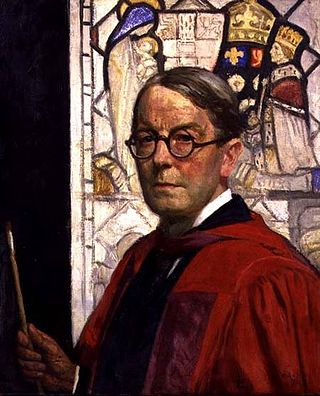
Westminster Abbey, formally titled the Collegiate Church of Saint Peter at Westminster, is an Anglican church in the City of Westminster, London, England. Since 1066, it has been the location of the coronations of 40 English and British monarchs and a burial site for 18 English, Scottish, and British monarchs. At least 16 royal weddings have taken place at the abbey since 1100.

St Albans Cathedral, officially the Cathedral and Abbey Church of St Alban, also known as "the Abbey", is a Church of England cathedral in St Albans, England.

Inigo Jones was an English architect who was the first significant architect in England in the early modern era and the first to employ Vitruvian rules of proportion and symmetry in his buildings. As the most notable architect in England, Jones was the first person to introduce the classical architecture of Rome and the Italian Renaissance to Britain. He left his mark on London by his design of single buildings, such as the Queen's House which is the first building in England designed in a pure classical style, and the Banqueting House, Whitehall, as well as the layout for Covent Garden square which became a model for future developments in the West End. He made major contributions to stage design by his work as a theatrical designer for several dozen masques, most by royal command and many in collaboration with Ben Jonson.

William Allen Alsop was a British architect and Professor of Architecture at University for the Creative Arts's Canterbury School of Architecture.
Basil Champneys was an English architect and author whose most notable buildings include Manchester's John Rylands Library, Somerville College Library (Oxford), Newnham College, Cambridge, Lady Margaret Hall, Oxford, Mansfield College, Oxford and Oriel College, Oxford's Rhodes Building.
On 20 November 1992, a fire broke out in Windsor Castle, the largest inhabited castle in the world and one of the official residences of the British monarch. The castle suffered extensive damage and was fully repaired within the next five years at a cost of £36.5 million, in a project led by the conservation architects Donald Insall Associates. It led to Queen Elizabeth II paying tax on her income, and to Buckingham Palace, one of her other official residences, being opened to the public to help pay for the restoration work. This event was part of what the Queen called her annus horribilis.

Charles Francis Annesley Voysey was an English architect and furniture and textile designer. Voysey's early work was as a designer of wallpapers, fabrics and furnishings in a Arts and Crafts style and he made important contribution to the Modern Style, and was recognized by the seminal The Studio magazine. He is renowned as the architect of several country houses.

The Art Workers' Guild is an organisation established in 1884 by a group of British painters, sculptors, architects, and designers associated with the ideas of William Morris and the Arts and Crafts movement. The guild promoted the 'unity of all the arts', denying the distinction between fine and applied art. It opposed the professionalisation of architecture – which was promoted by the Royal Institute of British Architects at this time – in the belief that this would inhibit design. In his 1998 book, Introduction to Victorian Style, University of Brighton's David Crowley stated the guild was "the conscientious core of the Arts and Crafts Movement".

Sir George James Frampton, was a British sculptor. He was a leading member of the New Sculpture movement in his early career when he created sculptures with elements of Art Nouveau and Symbolism, often combining various materials such as marble and bronze in a single piece. While his later works were more traditional in style, Frampton had a prolific career in which he created many notable public monuments, including several statues of Queen Victoria and later, after World War I, a number of war memorials. These included the Edith Cavell Memorial in London, which, along with the Peter Pan statue in Kensington Gardens are possibly Frampton's best known works.

William Richard Lethaby was an English architect and architectural historian whose ideas were highly influential on the late Arts and Crafts and early Modern movements in architecture, and in the fields of conservation and art education.

Sir David Frank Adjaye is a Ghanaian-British architect who has designed many notable buildings around the world, including the National Museum of African American History and Culture in Washington, D.C.. Adjaye was knighted in the 2017 New Year Honours for services to architecture. He received the 2021 Royal Gold Medal, making him the first African recipient and one of the youngest recipients. He was appointed to the Order of Merit in 2022.
Lewis Nockalls Cottingham was a British architect who pioneered the study of Medieval Gothic architecture. He was a restorer and conservator of existing buildings. He set up a Museum of Medieval Art in Waterloo Road, London with a collection of artefacts from demolished buildings and plaster casts of the medieval sculpture.

Robert Anning Bell was an English artist and designer.

Francis Walter Skeat was an English glass painter who created over 400 stained glass windows in churches and cathedrals, both in England and overseas. Skeat was a Fellow of the Royal Society of Arts, a Fellow of the British Society of Master Glass Painters, and a member of the Art Workers Guild.

John Leopold DenmanFRIBA was an architect from the English seaside resort of Brighton, now part of the city of Brighton and Hove. He had a prolific career in the area during the 20th century, both on his own and as part of the Denman & Son firm in partnership with his son John Bluet Denman. Described as "the master of ... mid-century Neo-Georgian", Denman was responsible for a range of commercial, civic and religious buildings in Brighton, and pubs and hotels there and elsewhere on the south coast of England on behalf of Brighton's Kemp Town Brewery. He used other architectural styles as well, and was responsible for at least one mansion, several smaller houses, various buildings in cemeteries and crematoria, and alterations to many churches. His work on church restorations has been praised, and he has been called "the leading church architect of his time in Sussex"; he also wrote a book on the ecclesiastical architecture of the county.
Brian Thomas (1912–1989) was a British artist best known for his decorative work in church buildings, particularly murals and stained glass.

The King George VI and Queen Elizabeth Memorial, situated between The Mall and Carlton Gardens in central London, is a memorial to King George VI and his consort, Queen Elizabeth. Completed in its present form in 2009, the memorial incorporates an earlier, Grade II listed statue of George VI by William McMillan, unveiled by his daughter Queen Elizabeth II in 1955. The reconfigured memorial, which includes a statue of the Queen Mother by Philip Jackson, relief sculpture by Paul Day and an architectural setting by Donald Buttress and Donald Insall, was unveiled by Queen Elizabeth II in 2009.

The Queen Alexandra Memorial on Marlborough Road, London, which commemorates Queen Alexandra, was executed by the sculptor Sir Alfred Gilbert between 1926 and 1932. It consists of a bronze screen incorporating allegorical figures, set into the garden wall of Marlborough House and facing St James's Palace. A late example of a work in the Art Nouveau style, it was regarded by the sculptor as his "Swan song".

Cecil Walter Thomas, FRBS, was a British sculptor and medallist. As a sculptor, he created many private memorials for display in churches and cemeteries and as a medallist was regularly commissioned by the Royal Mint.
Sir Mervyn E. Macartney FSA FRIBA was a British architect and Surveyor of the Fabric of St Paul's Cathedral between 1906 and 1931. Macartney was a leading figure in the Arts and Craft movement, being a founder of the Art Workers' Guild and the Arts and Crafts Exhibition Society, and an influential voice as the editor of The Architectural Review and via his publications The Practical Exemplar of Architecture and Later Renaissance Architecture in England with John Belcher.















